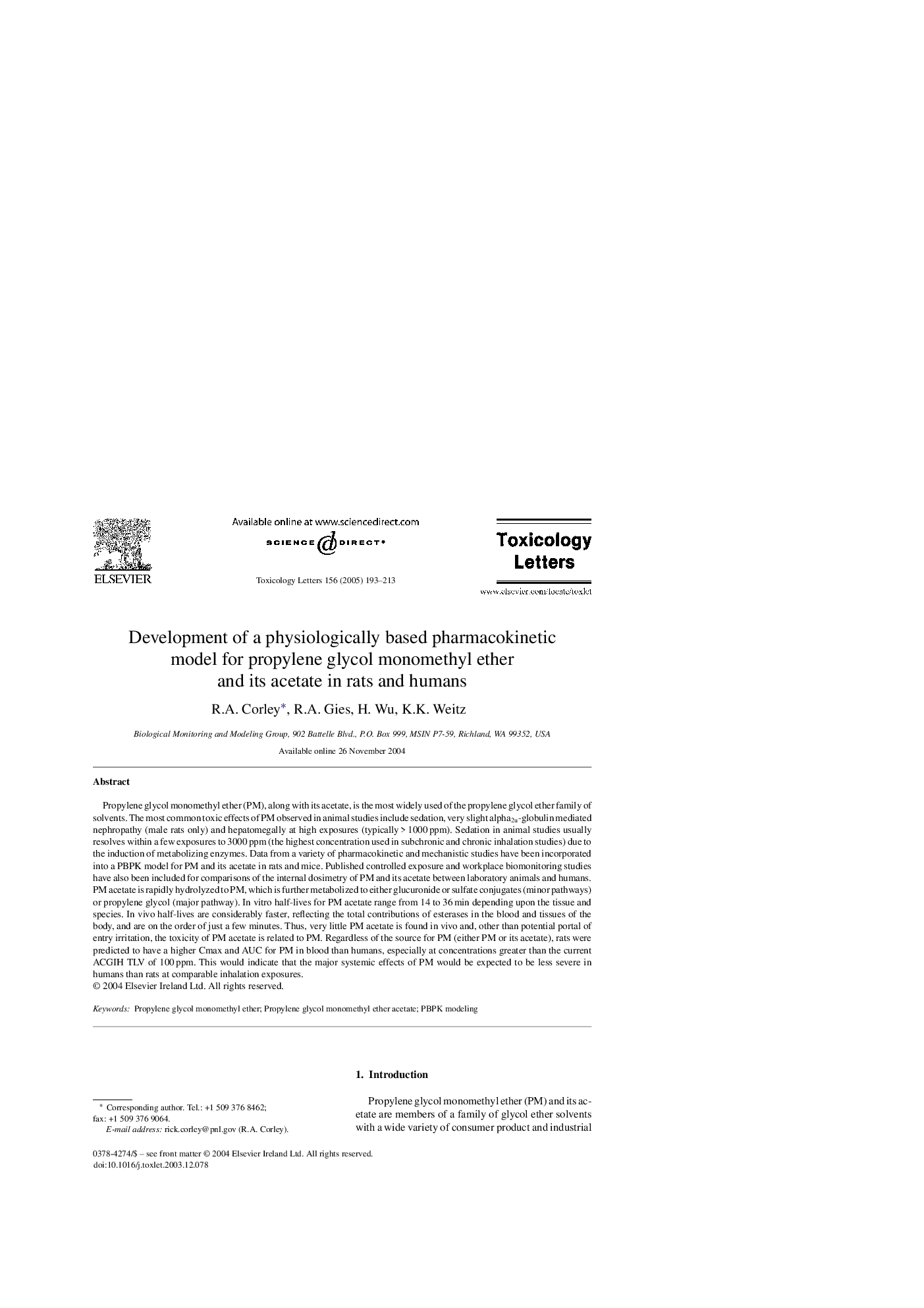| کد مقاله | کد نشریه | سال انتشار | مقاله انگلیسی | نسخه تمام متن |
|---|---|---|---|---|
| 9036845 | 1133377 | 2005 | 21 صفحه PDF | دانلود رایگان |
عنوان انگلیسی مقاله ISI
Development of a physiologically based pharmacokinetic model for propylene glycol monomethyl ether and its acetate in rats and humans
دانلود مقاله + سفارش ترجمه
دانلود مقاله ISI انگلیسی
رایگان برای ایرانیان
کلمات کلیدی
موضوعات مرتبط
علوم زیستی و بیوفناوری
علوم محیط زیست
بهداشت، سم شناسی و جهش زایی
پیش نمایش صفحه اول مقاله

چکیده انگلیسی
Propylene glycol monomethyl ether (PM), along with its acetate, is the most widely used of the propylene glycol ether family of solvents. The most common toxic effects of PM observed in animal studies include sedation, very slight alpha2u-globulin mediated nephropathy (male rats only) and hepatomegally at high exposures (typically > 1000 ppm). Sedation in animal studies usually resolves within a few exposures to 3000 ppm (the highest concentration used in subchronic and chronic inhalation studies) due to the induction of metabolizing enzymes. Data from a variety of pharmacokinetic and mechanistic studies have been incorporated into a PBPK model for PM and its acetate in rats and mice. Published controlled exposure and workplace biomonitoring studies have also been included for comparisons of the internal dosimetry of PM and its acetate between laboratory animals and humans. PM acetate is rapidly hydrolyzed to PM, which is further metabolized to either glucuronide or sulfate conjugates (minor pathways) or propylene glycol (major pathway). In vitro half-lives for PM acetate range from 14 to 36 min depending upon the tissue and species. In vivo half-lives are considerably faster, reflecting the total contributions of esterases in the blood and tissues of the body, and are on the order of just a few minutes. Thus, very little PM acetate is found in vivo and, other than potential portal of entry irritation, the toxicity of PM acetate is related to PM. Regardless of the source for PM (either PM or its acetate), rats were predicted to have a higher Cmax and AUC for PM in blood than humans, especially at concentrations greater than the current ACGIH TLV of 100 ppm. This would indicate that the major systemic effects of PM would be expected to be less severe in humans than rats at comparable inhalation exposures.
ناشر
Database: Elsevier - ScienceDirect (ساینس دایرکت)
Journal: Toxicology Letters - Volume 156, Issue 1, 28 March 2005, Pages 193-213
Journal: Toxicology Letters - Volume 156, Issue 1, 28 March 2005, Pages 193-213
نویسندگان
R.A. Corley, R.A. Gies, H. Wu, K.K. Weitz,